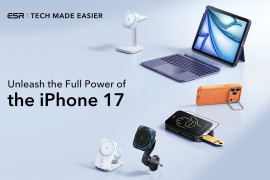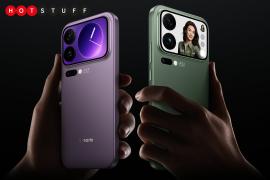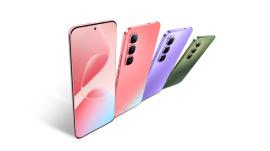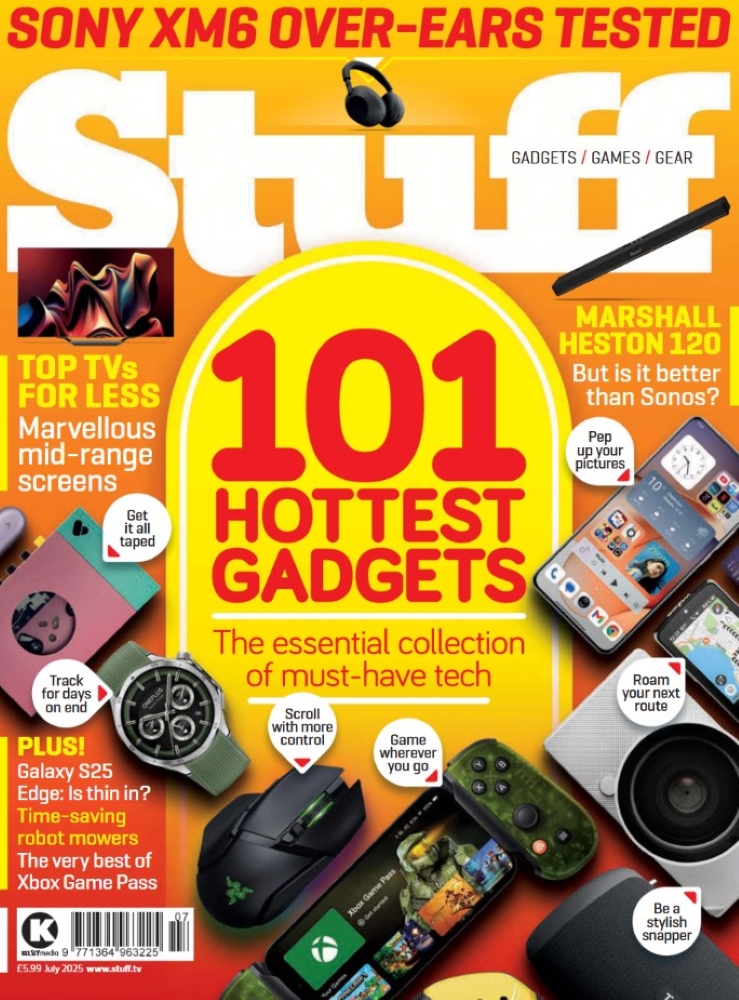I loved the Huawei Pura 80 Ultra’s clever cameras – but it’s still impossible to recommend
Dual-lens zoom and a huge main snapper impress, but it's bad news elsewhere
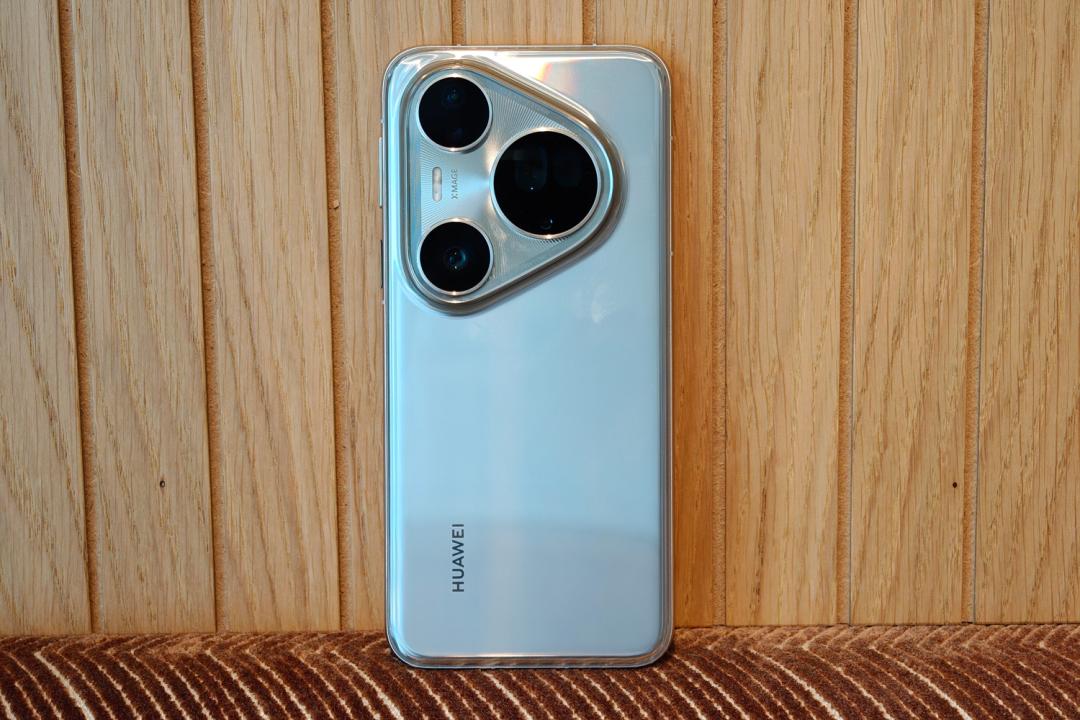
Stuff Verdict
It’s got a truly outstanding set of cameras, but Huawei’s hardware handicaps everywhere else puts the Pura 80 Ultra a long distance behind today’s best flagship phones.
Pros
- Phenomenal photography skills, particularly from the zoom lens
- Distinctive design with top-tier water resistance
- Rapid wired and wireless charging
Cons
- Restrictive software if you’re used to Google services
- Can’t match other flagships on performance
- Hardware lags behind the competition in several areas
Introduction
If world-first camera hardware wets your whistle, the Pura 80 Ultra might be your 2025 phone photography highlight. It gives the best smartphones a run for their money with a two-lens telephoto camera that aims to get you closer to the action. Huawei hasn’t cut any corners with the other sensors, either, and knows a thing or two about nuanced picture processing.
Things aren’t quite so rosy elsewhere, with familiar caveats around connectivity, processing power, and software on account of Huawei’s ongoing foreign trade troubles – but this is still a flagship phone, and as such commands a flagship price. It’ll set you back AED 5099 (roughly $1400/£1050) in the United Arab Emirates, one of the few places outside of China Huawei still has a big presence.
After living with one for a few weeks, I’ve been wowed by the photos it takes – but not enough to overlook the frustrations I experienced elsewhere.
How we test smartphones
Every phone reviewed on Stuff is used as our main device throughout the testing process. We use industry standard benchmarks and tests, as well as our own years of experience, to judge general performance, battery life, display, sound and camera image quality. Manufacturers have no visibility on reviews before they appear online, and we never accept payment to feature products.
Find out more about how we test and rate products.
Design & build: sure to stand out
Huawei has really leaned into the unique styling established by last year’s Pura 70 Ultra, with one of the biggest camera bumps you’ll find on any phone. It’s needed to make room for the clever zoom lenses, and I like the fact the firm hasn’t gone with a giant circular splodge like most other flagships from Chinese brands.
The crosshatched faux leather of the outgoing phone has been swapped for an altogether more blingy finish on my Prestige Gold review unit; the sunburst effect on the camera island looks more like something you’d see on a fancy wristwatch. The Golden Black alternative is more subdued, but keeps some gold accents around the lenses – in case their sheer size wasn’t already enough to draw attention.
In some ways the design is a bit of a throwback, with curved-edge glass on both sides that blends into a rounded aluminium frame. Most rivals have settled on the flat glass, flat frame approach, so in some ways this is a welcome change from the norm. It fits nicely in my hand, while still providing enough to grip onto. That’s handy, as this is a rather hefty handset, weighing in at 234g.
The screen is covered by Huawei’s second-gen Crystal Armor Kunlun glass, which is a lot more scratch-resistant than the original stuff. IP68 and IP69 ratings are also as good as it gets for protection, even if I’ve still yet to put my phone through enough environmental torture for that to make a difference to its survival.
A side-mounted fingerprint sensor/power button combo is unusual on anything but a foldable phone these days, and is another sign Huawei has limited choice when it comes to components not made in-house. It works well enough, but I’d much rather an in-display sensor or secure facial recognition. It’s also worth highlighting that the Pura 80 Ultra goes without any sort of 5G connectivity, at least on this global version, which will limit its Western appeal.
Screen & sound: looking sharp
At a palm-filling 6.8in, the Pura 80 Ultra’s quad-curved display hasn’t grown at all from its predecessor – but Huawei has managed to squeeze in a few extra rows of pixels. The 2848×1276 panel looks perfectly crisp at arms’ length, packing plenty of details into your photos, and the adaptive refresh rate meant scrolling always looked buttery smooth.
It’s an OLED, so has the vibrant colours and deep, perfect black levels I’ve come to expect. Tones are more natural than some rivals, but there’s a Vivid option in the settings menus if you want a little extra pop. A near enough infinite contrast ratio also works in its favour, giving videos plenty of punch. It’s a shame, then, that Limited DRM support meant I was limited to SD content in my streaming apps – and without HDR.
Huawei reckons this phone can hit a peak 3000 nits brightness, but it falls way short of that for real-world use. In a side-by-side with a few other current flagships, I thought this was the dimmest of the lot overall, though it still puts out enough light that outdoor visibility wasn’t a major issue.
The Pura 80 Ultra uses a fairly standard stereo speaker setup, with a down-firing driver doing most of the heavy lifting and an earpiece tweeter as backup. Adding an up-firing grille at the top does help create a more rounded sound, though, and it has plenty of volume on tap.
Cameras: new zoom king?
Each one of the Pura 80 Ultra’s four cameras has some tech worth shouting about. The lead snapper uses a 1-inch sensor, putting it on par with the Oppo Find X8 Ultra and Xiaomi 15 Ultra for sheer size, but pairs it with an f/1.6-4.0 variable aperture for better controlling depth of field – something you get an awful lot of with a sensor so physically big. Laser autofocus and optical image stabilisation also make the grade.
The 40MP ultrawide also has autofocus, letting it get as close as 2cm from your subject when doubling as a macro shooter. The 13MP selfie cam may not have a huge pixel count, but its generous field of view and autofocus abilities make it handy for group shots.
It’s the telephoto that makes the biggest impression. Not only is its 50 MP, 1/1.28in sensor about as physically big as it gets on a phone, but it swaps between two lenses on the fly using a tiny motor to give you 3.7x and 9.4x magnification – without cropping or digital enhancement, or needing two separate sensors. Effectively, this is the most optical zoom you’ll get on any smartphone right now. Factor in the ultrawide’s expansive field of view and you’ve got a seriously long focal range to pick from.
On a recent foreign trip, the extra magnification really came into its own, letting me get so much closer to buildings and subjects than I’d otherwise be able to. 3.7x zoom snaps are wonderfully detailed, with very little noise and plenty of dynamic range. Swapping to the other lens retains lots of detail and colours are consistent, though the image processing is clearly doing a lot of heavy lifting for distant subjects; buildings can look overly smooth and there’s more sharpening at play than I expected for optical magnification.
Used for close-ups, there’s a gorgeous amount of bokeh blur on show – so much so I’d regularly use it instead of the main camera, which can create dreamy depth in its sleep when using its widest aperture.
Left to its own devices the main camera tends to stick around f/2.0, and you’ve got to dive into the Pro mode if you want to set the aperture manually. For the most part I was fine with auto mode, where it spat out some wonderfully detailed images in pretty much all lighting conditions. It helps that there’s oodles of dynamic range, aided by the way it takes three frames per HDR image rather than two now.
Colours are impactful, there’s ample contrast, and you have a handful of distinctive photographic styles just a swipe away if you fancy a more filmic look. I did think that white balance could be a little hit-or-miss, and that was true across the board, not just the main lens. But there’s no doubting it rubs shoulders with the very best cameraphones in good light.
At night, the main camera continues to capture impressive amounts of detail, even without needing the extra second or two afforded by the dedicated Night mode. White balance can once again be a bit variable, but colours are otherwise pretty natural and noise is kept well in check.
The telephoto is at the top of its game here, at least at 3.7x. I got some impressively clean and detailed shots of subjects who refused to stay still, despite there being very little light. At 9.4x the processing is again easier to spot, but the over-sharpening and smoothed-out details wouldn’t stop me sharing my snaps on social media.
Software experience: heard it all before
Outside of China, the Pura 80 Ultra runs Huawei’s EMUI 15 interface, on top of what’s effectively Android 12 – except with all of the Google bits stripped out. You can side-load some of them back in if you’re determined, and a few third-party apps make the process a bit smoother, but features like Quickshare and Google Wallet payments will always be locked off. That’ll be an instant deal-breaker for the majority of Western phone buyers.
Huawei has an extensive selection of own-brand apps to make up for it, and the AppGallery marketplace is there to fill the remaining gaps – except with such a small user base compared to the Google Play Store, big-name developers have little reason to get on board. There are a few recognisable apps, but I struggled to find alternatives to even half of what I have installed on my personal phone.
More frustrating is how keen everything is to chuck an advert your way. The video player, ebook reader app and Themes store are desperate for your to part with some cash, and there’s way too much pre-installed bloat for a flagship phone.
Huawei’s Celia voice assistant can’t be replaced with Google Gemini, and its abilities are more limited here than on the Chinese-market handset. There’s very little in the way of AI apps or features anywhere else.
The overall styling doesn’t feel too far removed from the previous EMUI generation, with all your apps scattered across various homescreens rather than stashed in a drawer, and split notifications and quick settings screens based on which side of the screen you swipe down from. Dig deeper and you’ll find a bunch of gesture-based controls, floating shortcut menus, and a 75:25 split-screen option for multitasking.
There’s no word on what customers can expect in terms of long-term updates – if indeed it can expect any at all, given the outdated version of Android Huawei is forced to use on its global devices.
Performance & battery life: the hand you’re dealt
It might’ve landed with a new generation of home-grown Huawei silicon, but the Pura 80 Ultra’s Kirin 9020 chipset is based on comparatively old tech. The eight-core CPU is built on a 7nm architecture, while the rest of the phone world is using far more efficient 3nm. Even paired with a generous 16GB of RAM, that puts it on the back foot in terms of raw performance.
Synthetic benchmark scores put it some 50% slower than the Samsung Galaxy S25 Ultra and its Snapdragon 8 Elite processor. It sits behind every single flagship phone I’ve tested in 2025, and on paper has the oomph you’d expect from a mid-range device costing less than half the cash.
There’s no support for modern graphics standards like Vulkan, so I wasn’t able to run some of my usual gaming tests. It also gets rather toasty when pushed for even a short amount of time, limiting its number-crunching abilities even further.
| Huawei Pura 80 Ultra benchmark scores | |
| Geekbench 6 single-core | 1250 |
| Geekbench 6 multi-core | 3552 |
| Geekbench AI | 1454 |
| PCMark Work 3.0 | 9733 |
| 3Dmark WIld Life Extreme | 1534 |
Benchmarks and real-world performance are two different things, and for the most part the Pura 80 Ultra felt reasonably responsive when swiping through homescreens and opening apps. It just lacks the instant reaction times you expect of a flagship phone. Gaming was also mediocre, with the titles I tried largely defaulting to medium settings.
The Pura 80 Ultra available outside of China has a smaller 5170mAh battery than the one on sale at home, which gets a much beefier 5700mAh cell. When combined with a processor that’s a bit behind the times, that doesn’t make for especially impressive longevity. I was able to make it through a day of typical use, but had to use the battery saver to make it to bedtime. Looping video sees it drain several hours faster than a Google Pixel 9 Pro XL, which isn’t exactly a stamina champ itself.
On the plus side, this phone is seriously quick to charge when you’ve got a compatible power brick or wireless charging pad. It’ll manage 100W over USB-C, or 80W wirelessly – though the latter is only with a specific Huawei charging pad, which I didn’t have access to for testing. A full wired top-up in under 45 minutes is still an excellent result, besting pretty much every other 2025 flagship.
Huawei Pura 80 Ultra verdict
As much as I was blown away by the Pura 80 Ultra’s photographic ability, cameras are just one piece of the flagship phone puzzle. Taken as a whole, there are unfortunately too many hardware letdowns here, on top of the already restrictive software. There’s only so much Huawei can do in-house, and without access to current-gen components, the firm has fallen behind on performance and battery life.
The Pura 80 Ultra still gets plenty right, like its top-tier water resistance and lightning-fast charging speeds. I’m sure the distinctive design will earn plenty of fans, too. But for Western audiences, who take 5G connectivity as a given and use Google services on the daily, this will always be a seriously niche proposition.
Stuff Says…
It’s got a truly outstanding set of cameras, but Huawei’s hardware handicaps everywhere else puts the Pura 80 Ultra a long distance behind today’s best flagship phones.
Pros
Phenomenal photography skills, particularly from the zoom lens
Distinctive design with top-tier water resistance
Rapid wired and wireless charging
Cons
Restrictive software if you’re used to Google services
Can’t match other flagships on performance
Hardware lags behind the competition in several areas
Huawei Pura 80 Ultra technical specifications
| Screen | 6.8in, 2848×1276 OLED w/ 1-120Hz |
| CPU | Huawei Kirin 9020 |
| Memory | 16GB RAM |
| Cameras | 50MP w/ 1-inch sensor, f/1.6-4.0 aperture, dual pixel PDAF, OIS + 50MP, f/2.4 telephoto w/ 3.7x optical zoom, PDAF, OIS – switchable to 12.5MP, f/3.6, 9.4x optical zoom + 40MP, f/2.2 ultrawide w/ autofocus rear 13MP, f/2.0 w/ autofocus front |
| Storage | 512GB/1TB on-board |
| Operating system | Android w/ EMUI |
| Battery | 5170mAh w/ 10W wired, 80W wireless charging |
| Dimensions | 163x76x8.3 mm, 234g |

